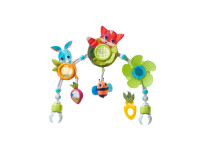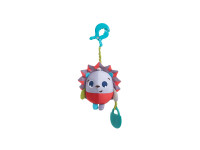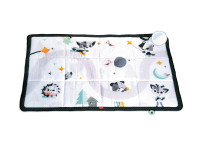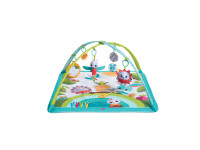- Our Products
- Collections
- Baby Development
- Parents Essentials
Created with love and care by our child development experts, this is a comprehensive set of guidelines for various baby development milestones and a tool for helping parents grow with their babies.
Fine Motor Skills 1 - 3 m
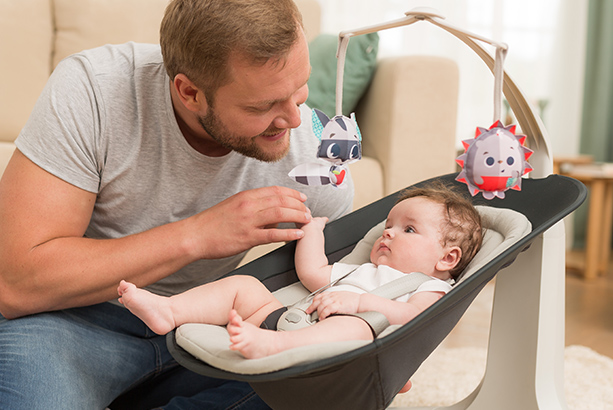
Hands
The muscles are stronger and the movements become more defined. Jumpy hand movements are softer and smoother, clenched fists are now released and the fingers are more relaxed and open. By the end of the third month, the grasp reflex weakens considerably, but is not entirely gone; babies are still unable to grasp an object voluntarily. By the end of the third month, babies begin to strike at objects purposely, which is the first expression of eye-hand coordination.
Eyes
By 8-10 weeks, babies' eye muscles are stronger, and they can focus on objects placed in their field of vision, and even track their movement; as eye-hand coordination progresses, babies can move their head to continue tracking a moving object.
Eye-Hand Coordination
Babies now reach a breakthrough discovery: they become aware of their own hands. Babies are fascinated by this discovery, and continue to explore their hands by gazing at them and putting them into their mouth. Random strokes at an object stir babies to turn their heads towards it. The discovery of the hands and the control they have over them opens a new world of experiences. Next, babies look at an object and try to reach it. Initially, these attempts may be strictly trial and error, but by the end of the third month, following frequent practice, babies reach out and strike at objects with purpose and intention.
Milestones
- At two months, baby begins to become aware of his hands, exploring them by putting them into his mouth.
- Between two and three months, eye-hand coordination begins to develop.
- At three months, the grasp reflex gradually fades.
Tiny Tips
- Place a hanging toy within baby's reach, so that he can strike it. This helps develop eye-hand coordination.
- Offer your baby a rattle that makes an appealing sound. The positive feedback encourages her to move her hands, strengthening muscles and developing eye-hand coordination.
Articles
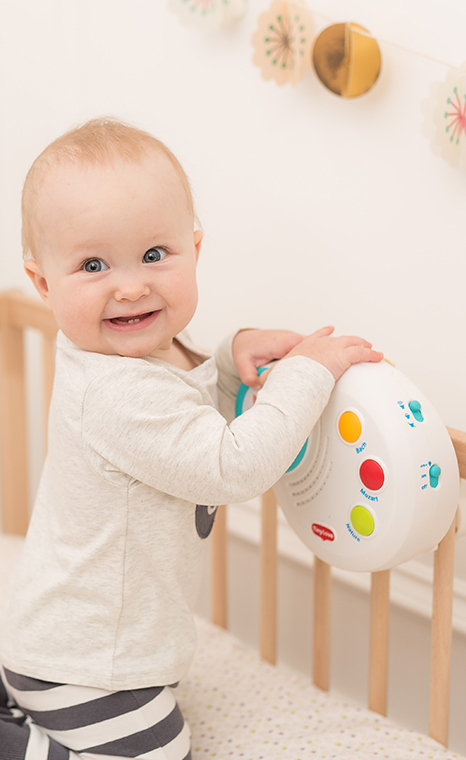
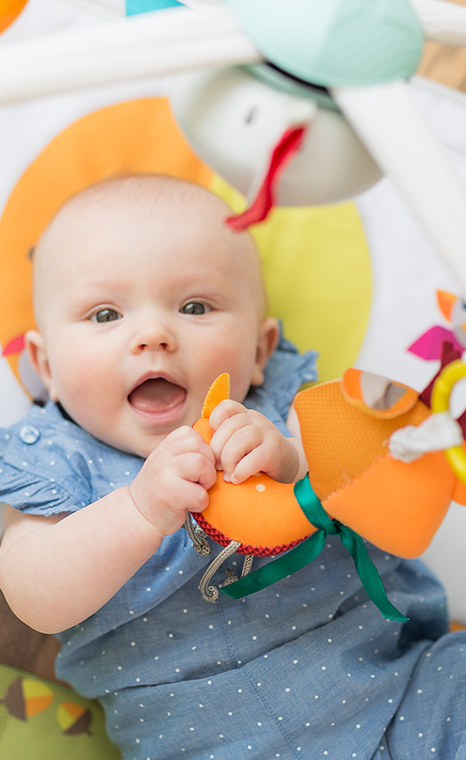

Fascinating Facts about Music and Babies
At the moment of birth, baby’s brain is a little over a quarter of the size of an adult’s brain and grows rapidly in the first three years. This ione reason why the first years are so significant in helping babies realize their full potential. Listening to music is one excellent way to do so.
Read more

Hand-Eye Coordination
After discovering their hands, babies need to learn that they can activate them, make use of them and coordinate their movement to reach what they want. Read full article to learn more about this fascinating process of discovery.
Read more
























 English - International
English - International French - France
French - France Spanish
Spanish German
German Portuguese
Portuguese English - USA
English - USA English - UK
English - UK Russian
Russian Italian
Italian Japanese - Japan
Japanese - Japan Portuguese - Portugal
Portuguese - Portugal Polish - Poland
Polish - Poland
